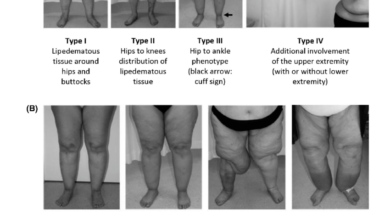Welding Woes: How Exposure to Fumes and Sparks Impacts Your Well-Being

In several industries, such as manufacturing, car repair, and construction, welding is an essential operation. It entails welding metals together at high temperatures, which produces sparks and fumes that can be quite harmful to the welder’s health. Although many people are familiar with the technical aspects of welding, many people are unaware of the health dangers that come with being around fumes and sparks. This article explores the several ways in which these factors impact well-being, highlighting the significance of awareness and preventive actions.
Comprehending Sparks and Fumes in Welding
What Welding Fumes Are Made Of
Fine particles emitted into the air during the welding process make up welding fumes. A mixture of metals (including lead, manganese, and cadmium), oxides, and other dangerous materials can be found in these vapors. Depending on the type of welding operation, the materials being welded, and the consumables employed, these vapors’ precise composition varies.
Heat produced by the welding process melts the filler material and base metal. The metal vaporizes when it cools, producing fumes that can land on surfaces or be breathed in. Long-term inhalation of these fumes can cause lung difficulties, neurological conditions, cancer, and other health concerns.
The Risks Associated with Sparks
Sparks are tiny, luminous pieces of metal that are welding bad for your health the welding arc during the welding process. Sparks can be very dangerous even though they appear harmless. They have the potential to start fires or explosions by setting off nearby combustible materials. In addition, they can burn or injure skin or eyes, thus handling them carefully and wearing protective gear is necessary.
The Dangers to Your Health from Welding Fumes
Issues with the Respiratory System
The influence of welding fumes on respiratory health is one of the most noticeable and urgent side effects. When these vapors are inhaled, they can cause:
1. Welders’ Lung:
A type of metal fume fever marked by flu-like symptoms such as fever, chills, and cough. Exposure to some metals, especially zinc oxide, causes this disease.
2. Chronic Bronchitis:
Prolonged exposure can cause airway inflammation, which can result in a persistent cough and production of phlegm.
3. Pneumoconiosis:
A collection of lung conditions brought on by breathing in different kinds of dust, including metal particles. Over time, it causes lung scarring and decreased lung function.
Impact on the Nerves
Manganese is one of the elements in welding fumes that has neurotoxic effects. Extended exposure to high manganese concentrations can cause:
1. Manganism:
Tremors, stiffness, and other movement problems are the hallmarks of this disorder, which is comparable to Parkinson’s disease. If exposure persists over time, symptoms can get worse.
2. Cognitive Impairment:
Research indicates that prolonged exposure to welding fumes may have a deleterious impact on cognitive function, resulting in memory issues and reduced focus.
Cardiovascular Issues
Studies have demonstrated a connection between welding fume exposure and a higher risk of cardiovascular disease. When fine particulate matter is inhaled, it can cause:
Prolonged exposure can cause the body to react inflammatoryly, which can lead to the development of heart disease.
Hypertension High blood pressure is linked to heart disease risk factors, such as welding fume exposure to specific metals.
1. Risks of Cancer
Welding fumes have been identified by the International Agency for Research on Cancer (IARC) as potentially cancer-causing to humans. Some metals, such nickel and chromium, are known carcinogens and can be detected in welding fumes. The chance of getting lung cancer and other cancers can rise with ongoing exposure.
2. Effect on the Mind
It is common to ignore the psychological effects of working in fume and spark-filled settings. Stress from the physical threats might cause mental health problems and anxiety. Furthermore, welders could encounter:
3. Workplace Uncertainty:
Anxiety regarding future employment prospects and job stability can arise from the possibility of chronic health problems.
4. Isolation:
Welders frequently work alone, which can make depressive and isolated feelings worse. This is especially true when combined with the physical demands of their jobs.
5. Preventive Actions
Preventing health hazards from welding fumes and sparks starts with raising awareness of them. The following are some crucial steps to safeguard wellbeing:
Equipment for personal protection (PPE)
Welders ought to put on the proper PPE, such as:
1. Breathers:
Respirators can shield the lungs from dangerous fumes by filtering them, depending on the type of welding and the degree of exposure.
2. Wearing protective clothes:
Long sleeves and pants shield the skin from exposure, while flame-resistant apparel helps stop burns from sparks.
3. Eye Protection:
In order to guard the eyes from sparks and UV rays, safety goggles or face shields are essential.
Ventilation It’s critical that welding areas have enough ventilation. By removing vapors from the breathing zone, local exhaust ventilation systems can greatly lower exposure. Maintaining adequate ventilation can aid in dispersing sparks and averting fire risks.
Frequent Health Assessment
To keep an eye on their general health and lung function, welders should get regular checkups. Treatment for respiratory conditions and other health disorders can be more effectively administered and long-term damage can be avoided with early detection.
Instruction and Knowledge
Employers ought to offer instruction on the dangers of sparks and fumes from welding. Welders can take preventative action to safeguard both themselves and their coworkers by being aware of the risks.
In summary
Although welding is a necessary profession, there are risks involved, especially with regard to fumes and flames. Exposure can have serious and wide-ranging effects on one’s health, including increased risks of cancer, cognitive impairment, cardiovascular disease, and respiratory problems. Furthermore, working in such conditions might have a considerable psychological cost in the form of mental health issues.
In order to reduce these dangers, awareness, preventative actions, and appropriate safety procedures are essential. Welders can safeguard a healthier workplace and protect themselves by putting safety and health first. The welding sector needs to push for improved procedures, worker assistance, and training while underlining the importance of putting safety first at all times.





